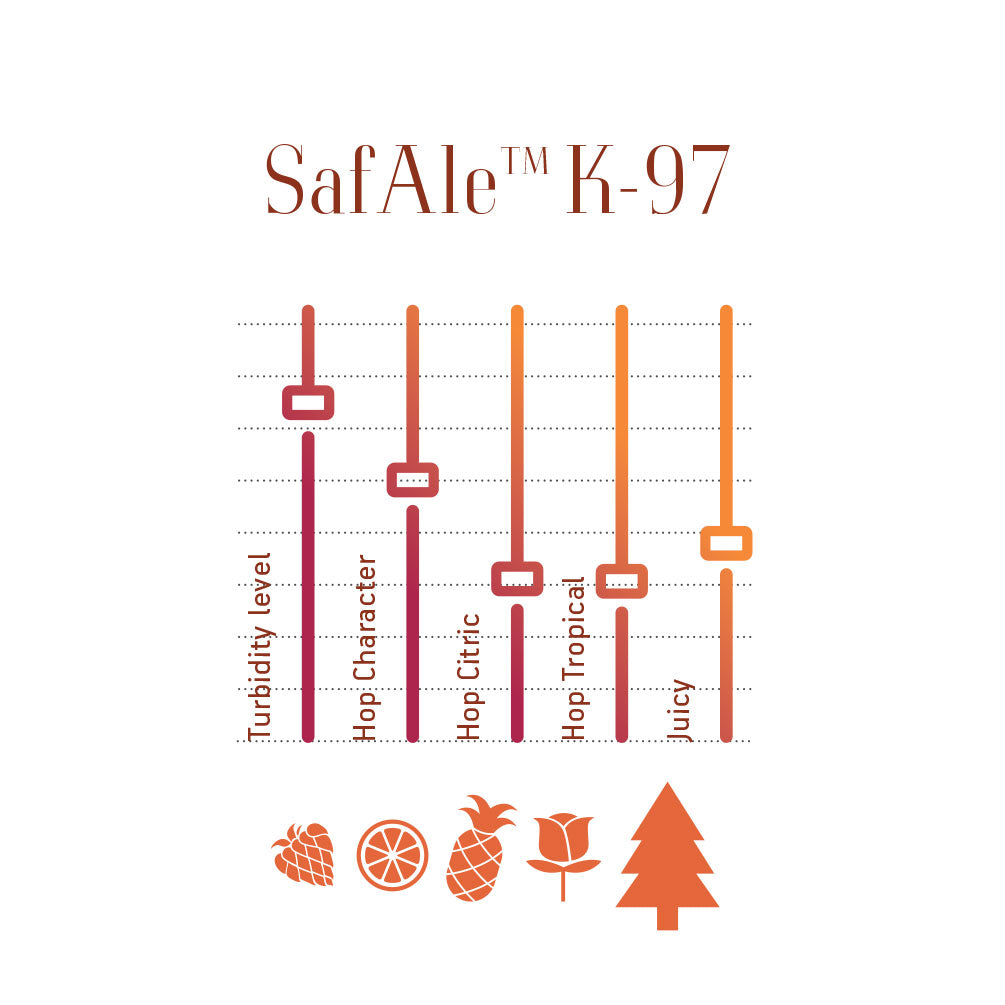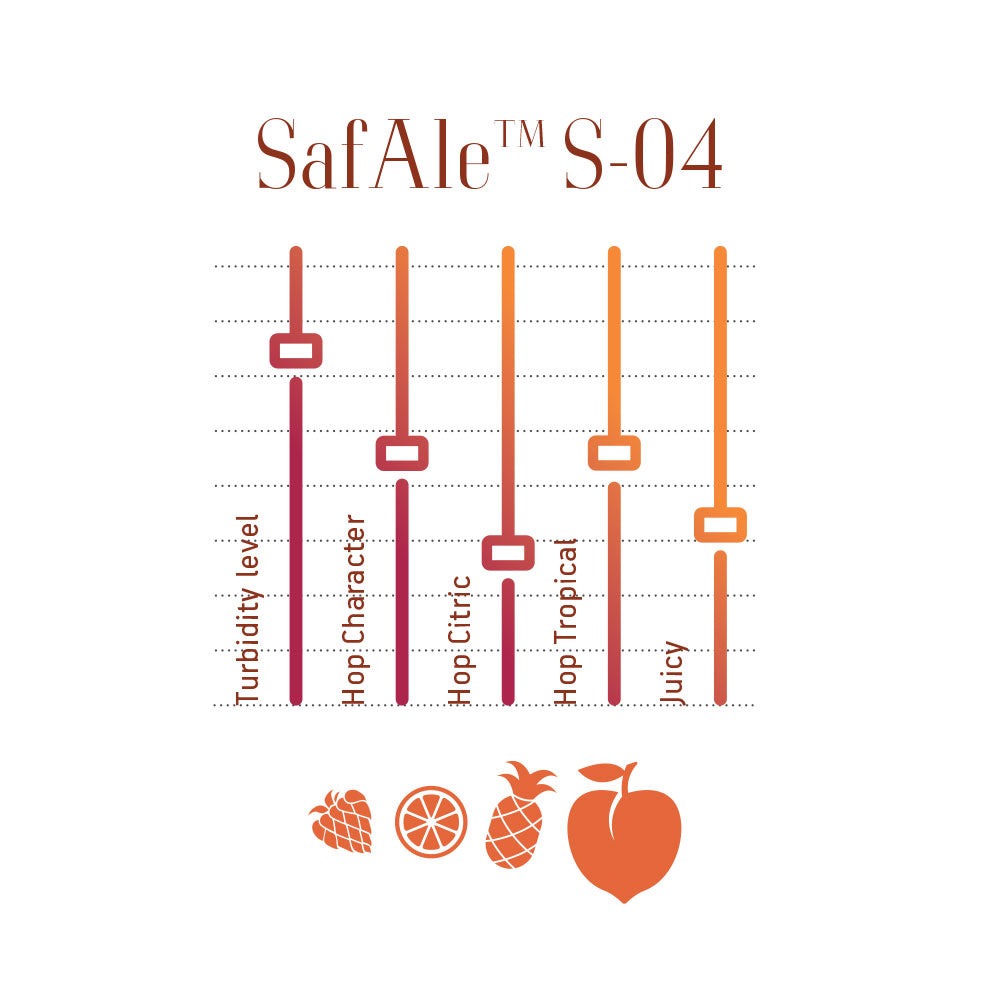April 17, 2020
Fermentis New England IPA Yeast Strains

In 1988, May 7 was announced before Congress as National Homebrew Day. The American Homebrewers Association (AHA) created AHA Big Brew as an annual event to celebrate National Homebrew Day around the world. AHA Big Brew is held each year on the first Saturday in May. In 2020 the AHA reached out to Fermentis to put together 3 yeast strains for the Northeast IPA style beer. They, in turn, reached out to us here at Northern Brewer to sell the yeast. Check out their special Fermentis SafAle New England IPA Yeast Strains.
What Is A New England IPA?
New England IPA is a new and on-trend style of the IPA family. NE IPA beers exhibit many sensory aspects that vary from conventional IPAs. While a traditional IPA is bitter or piney the best way to describe a NE IPA is a “juicy beer.” Even though it can range from 5-7% ABV, drinking a NE IPA beer is almost like drinking a rich, fresh fruit juice, as the hops and yeast contribute to producing those fruity flavors.
Why Are NE IPAs Hazy?
Haziness is also an important character of this beer style, a consequence of its particular ingredient composition. This type of beer is usually pale in color and presents a mild, neutral malt character, allowing its fruity-hop flavors to dominate, with a distinctly fresh intensity.
What Are The Key Characteristics Of A NE IPA?
With a NE IPA, you can expect hop flavors in the tropical fruit family, like mango, pineapple, passion fruit, and guava, as well as citrus fruit flavors, like orange, lime, and tangerine. You might even detect some stone fruit character, like peach and apricot. And it’s all about the hop aromas, which are not necessarily bitter. As opposed to other IPA styles, NE IPA tends to have moderate-to-low bitter intensity, with a smooth finish. Lastly, the body of the beer plays an important role, which it needs to do in order to be supportive of the juicy sensation. As a result, you get a very aromatic, flavorful, and highly drinkable beer.
How Do You Brew A New England IPA?
Typically, you should use malted barley, as well as oats and wheat, because they all contribute to the creamy character, the body and the haziness of the beer. Fermentis recommends an important charge of hops (.66 - 2 oz/gal) only in late hop additions. Late hopping and dry hopping with no or limited kettle hop addition during boiling. They suggest to primarily use fruity hop varieties such as Citra, Simcoe, Mosaic, Galaxy, Amarillo, El Dorado.
Does Yeast Play A Different Role With A NE IPA?
The impact of yeast on hop flavor expression is a new and exciting topic! Fermentis has studied in depth the impact of different yeast strains on NE IPA flavor expression. Yeast can affect it in different ways, not only on neutral flavors but how yeast affects the production of and contribution to fruity flavors. In fact, yeast will not only play a direct role in flavor formation, but it can also improve the release of some important hop flavors from precursors. Yeast can favor the hop character of beer by producing, releasing or interacting with important hop aroma compounds. Yeast also has an important role in the body of the beer; its suspension or sugar consumption profile can contribute to the mouthfeel of the beer, especially in this style with its “juicy” character.
Bio Transformation Of The Yeast
Biotransformation is the capacity of the yeast to metabolize or transform different molecules, and it is very important in the formation and release of some specific aromatic hop flavor components. Some of these components have intense tropical, citric or floral character. Without the activity of the yeast, these flavors wouldn’t be released and perceived in the beer.
How Can A Fermentis Yeast Solution Contribute To A NE IPA?
Fermentis picked several yeast strains out of their beer yeast range and studied their flavor expressions in one reference NE IPA recipe. They evaluated the impact of the yeast on hop flavor perceptions in a controlled manner, both sensory and analytically.
Fermentis has three specific yeast strains that are more suited to this style: SafAle™ K-97, SafAle™ S-33, and SafAle™ S-04. S-33 has the juiciest character and allows the release of intense hop tropical notes; S-04, on the other hand, releases more stone fruit notes and citric character. K-97 has the greenest, herbal and citric side of the hop character. Those are the three solutions they selected for having a juicy, hoppy and hazy beer in which the different fruity nuances can be driven by the yeast. You can observe the character of each of them in the graphs below.
Can You Mix The Three Yeast Styles
Some internet data shows that mix-yeast traces were found in some commercial NE IPA.
Fermentis did not evaluate mixed yeasts; They only evaluated them separately. While there’s nothing preventing you from mixing the yeasts, you must consider that the yeasts can interact with each other and one specific yeast can dominate the fermentation. Consequently, you may have less reproducibility over different batches and would no longer be able to reuse or re-pitch the yeasts once their proportions have changed.
Fermentis Academy
Fermentis Academy is a program that aims to expand knowledge of the science around quality beverage fermentation and characterization through detailed, applied research and by sharing the knowledge. Their goal is to spread the word about yeasts and their potential and to facilitate the creativity of the brewers and winemakers worldwide. To discover more about Fermentis products and find tips about fermentation, go to www.fermentis.com.



